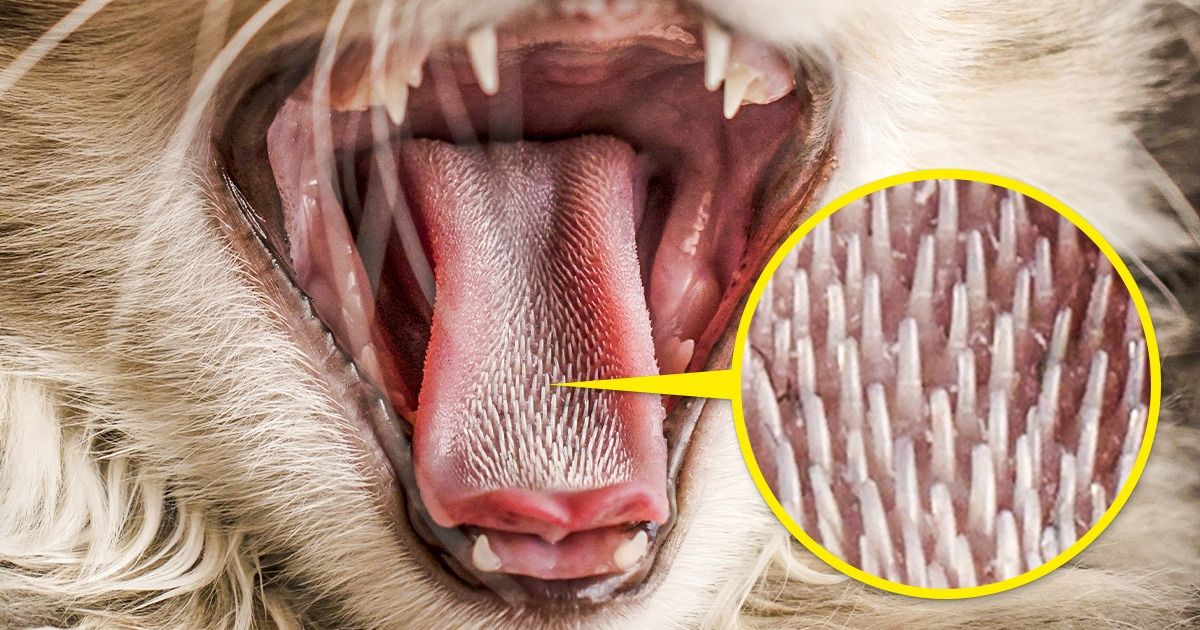I Refused to Keep My Late Son’s Fiancée in His House—We’re Not a Charity


If you have a cat at home, you’ve likely been lucky enough to get a small lick as a “thank you” for something you did. But this is rare, since usually, it’s dogs who exhibit this type of behavior, and we’re used to their moist and soft “kisses.” On the other hand, your kitty’s kisses normally feel rough, almost as if its tongue was made of sandpaper. Well, as it turns out, a cat’s tongue hides a special secret that makes it very special, explaining its coarseness.
Bright Side set out to do some research about why that’s the case, and what we found simply confirmed the fact that cats are amazing and that we should all have at least one at home.
We all know that cats love to groom themselves. And it’s hard to tell if they prefer doing that over sleeping — so let’s just call it even. However, to groom themselves, they use their coarse, sandy tongues. If you take a closer look at these things, you’ll soon notice that they have bristles of some kind, but these “bristles” are more complex than what they appear to be. They’re sometimes called filiform taste buds, and unlike ours, they’re made of keratin.
Keratin is the material that we also grow naturally in our bodies. In fact, it’s what our nails are made from. Just like our nails, cats’ taste buds are both flexible and firm. They’re also shaped like hooks or barbs. That’s why when a kitty licks your hand, it feels rough.
A recent study found that the feline filiform taste buds have another interesting property in addition to being curved like hooks: they’re actually hollow. This might strike you as strange at first. But the fact is, it helps the tongue collect saliva from their mouth to spread it through the cat’s fur when they groom themselves. This results in a thorough cleaning session, which we’re all familiar with.
To understand better how this works, think of a cat’s tongue as a sort of smart comb or brush. The saliva-filled taste buds can penetrate both layers of the animal’s fur, untangling knots, removing parasites and loose hairs. On top of that, they’re also filled with saliva that spreads evenly. It’s no wonder why cats’ fur always looks so silky and is odorless!
Considering that an average cat can spend up to 24% of its time “combing” its fur, scientists rightfully wondered whether this behavior is also a response to other needs aside from hygiene.
As it turns out, the same study mentioned in the previous point also proved something else. By taking thermal images of cats, scientists discovered that a large amount of saliva they spread on their fur while grooming themselves actually helps them balance their temperature to keep cool.
Researchers studied the tongues of 6 different species of felines, looking for possible inspiration. Their findings, in each case, were very similar. A lion’s tongue works just like that of a small domestic kitten. Such a masterpiece of engineering could not go unnoticed by researchers and scientists, who immediately thought about designing a 3D brush with some of the amazing functionalities that the feline tongue has.
The brush that resulted from these findings is called TIGR (which is short for tongue-inspired grooming), and it aims at artificially replicating the aforementioned feline taste buds. The engineers behind this design hope to use it to apply remedies and lotions directly to cats’ skin, keeping their fur free of knots, and even removing potential allergens. And for people who love their furry friends but not their stray hairs, the TIGR can help them remove it from the couch and other fabrics without a problem.
What other aspects of cats do you find fascinating and would like to learn more about?











